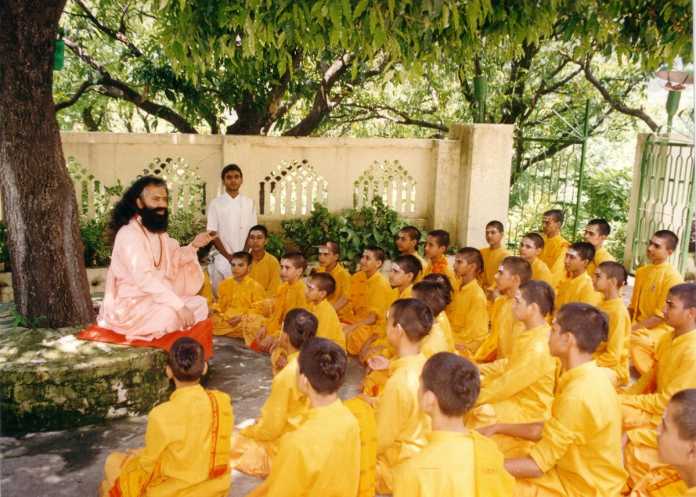India has a rich tradition of learning and education right from the antiquity. It is a much-known fact that people from countries as far as Portugal, Eastern Europe and the Middle East used to prefer India as their choice to achieve a higher level and quality education. The Gurukul system is one such profound method of education which was popular in ancient India. Under the Gurukul system, there was one superior teacher who used to educate his disciples irrespective of their caste, or financial position. These Gurukuls were usually established in the forest so that students could have a practical idea on how each thing functions differently on the planet, like fishing, hunting, and warfare for those who wanted to join the army, preserving the natural resources etc. Here we have 5 such ancient Gurukul methods that should be brought back into implementation in this era of so-called ‘Modern Indian Education System’ –
Teaching in the open
What could be better than learning about natural elements and sciences in a natural setting itself? The ancient education system encouraged the students to observe and learn about the surroundings around them at the same time. This teaching method also ensured good air and perfect atmosphere for studying on any normal day. Today when the studies are restricted to the four walls of a classroom, schools should take an initiative to have at least 3 lectures weekly on a clear day, in the school garden or playground. It is even scientifically proven that teaching in the open can encourage creative and out of the box thinking. This also helps for better understanding of theoretical and practical concepts.
Knowledge related to life
In ancient India, to keep the pupil away from the haunts of distraction and doom of the materialistic world, amidst beautiful natural surroundings, the pupil would sit by his teacher and talk about life problems along with some meditation. Back then bookish knowledge was not everything, the students were asked to step out in the real life more often, and learn things by talking to the people from all walks of life. Interaction with both teachers and people with experience both matter thoroughly. Today when technology is slowly eating our ancient educational beliefs and values, it is fairly important and required that a proper face to face interaction should be established between the teacher and the pupil.
Self-Care
The ancient Indian educational system also ensured that along with the student’s physical health, the pupil could also take care of him/herself in extreme cases of an outbreak of war or natural disasters. The kind of self-care taught then could ensure that the person would be able to survive if left in the middle of the forest by them. This kind of teachings include how to make shelter out of tree leaves, how to cook raw meat or plants in order to gain proper nutrition, gathering dry wood to lite the fire, etc.
Active and Regular Discussions
Places like Takshashila Vishwa Vidyalaya, the educational houses during the regime of Akbar, Shahjahan, etc. have encouraged active discussions or debates between students and also between scholars. The concept of debate is still in practice but only in the parliament of the country. In educational institutes, debates have merely become a competition even in which there is no active participation. Regular and Active discussions on theoretical topics related to academics and the current happenings increase the level of awareness and inculcate a desire to put forward their point of view in front of an audience.
Student-Teacher Respect and Discipline:
The student problem is almost entirely the result of the adult indiscipline which runs in all our Educational Institutions! The political chaos that has surrounded our thinking—surrounded all our institutions too, starting with the state, engulfing the family, the village the district administration and invaded the teacher community as well as the parents, and has produced its ‘evil seed’—the student problem! To make matters worse student problems are hyped up which lead to violent protests and bandhs. In earlier days, however, the teaching method was highly transparent and inculcated good values in the students. Students as well on the other hand respect and obey their gurus. The obedience of following one’s teacher is missing majorly today. Something that is not right, because without a good teacher it is impossible for one to be a good and respectable human and citizen of the country.
These were just a few qualities and methods that need to be brought back into our education system today, not only because they are ancient values and beliefs that need to be preserved, but also because the present generation and the upcoming generation need to take a lot of lessons on how the foundation of their country was laid on such strong bases of education, discipline and respect.






























